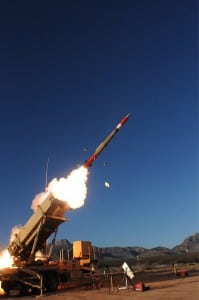
In flight tests earlier this month, Patriot Advanced Capability-3 (PAC-3) Missile Segment Enhancement (MSE) units worked with the Army’s Integrated Air and Missile Defense Battle Command System (IBCS) for the first time to intercept ballistic missiles, PAC-3 prime contractor Lockheed Martin [LMT] said Nov. 15. On Nov. 4, two PAC-3 MSE missiles integrated with Northrop Grumman’s IBCS to intercept tactical ballistic missile threats over White Sands Missile Range, N.M. Lockheed Martin said this was part of the first Field Surveillance…

 By
By 











